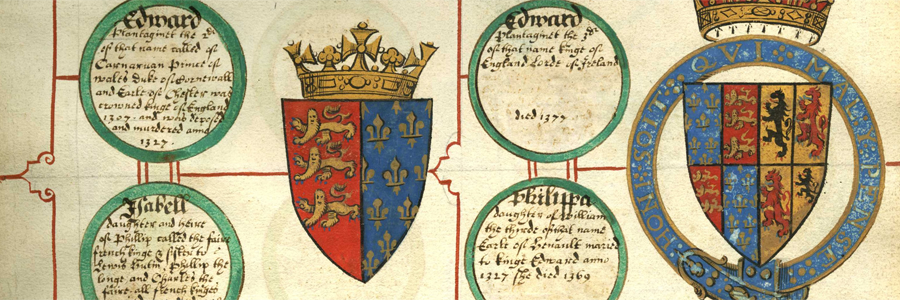
Everyone at Les Enluminures really, really believes that teaching with actual medieval manuscripts is a transformative experience (last May we even sponsored a session at Kalamazoo on the subject – read more about that here). This has always been an important and successful part of the mission of our text manuscripts site (www.textmanuscripts.com); many of our manuscripts are now seeing active use by librarians, teachers, and students in university and college libraries across the United States and Canada (in fact we are creeping up on TM 1,000, a milestone to be sure – more on that to come soon!).
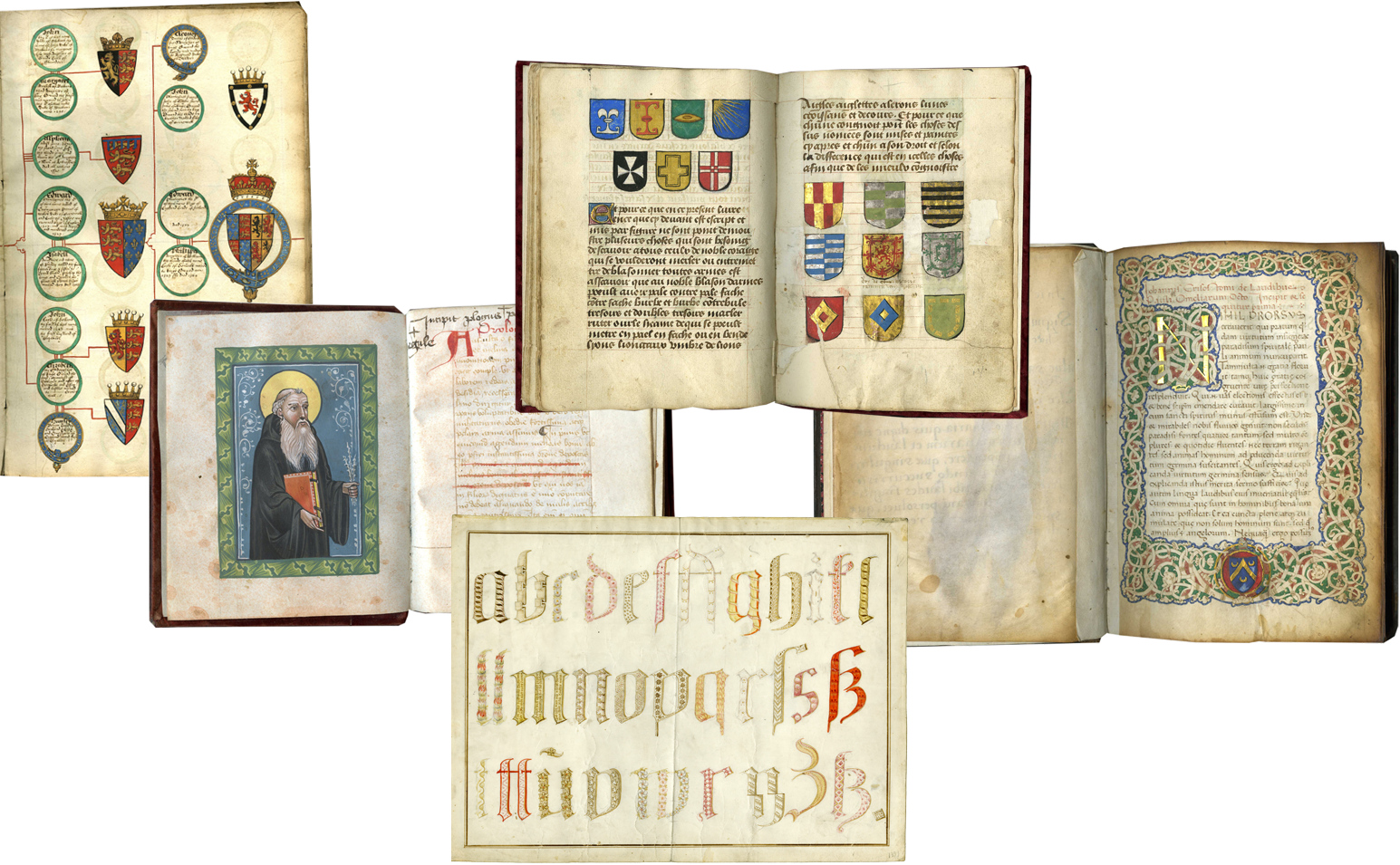
Our newest programs, Manuscripts in the Curriculum I and II, are an innovative expansion of this mission that enables participating schools to borrow a group of manuscripts for teaching (you can read more about it here and here.) It has been very exciting for us to see the different types of programming our manuscripts have inspired. I spent a couple of wonderful days with the team in Special Collections at the University of Iowa in November, and I can testify that the events they sponsored with the manuscripts were wonderful. I was particularly impressed by a series of open houses with the manuscripts organized by Micaela Terronez and Elizabeth Riordan, Outreach and Engagement Library.
Micaela Terronez is the current Olson Graduate Research Assistant at The University of Iowa Special Collections and University Archives, as well as a second-year master’s student in the School of Library and Information Science. Micaela is passionate about providing a space for underrepresented voices in special collections, and she uses these opportunities as a way to combat oppression and engage with marginalized communities. Before her time at Iowa, Micaela held positions at the Augustana College Special Collections and at the East Moline Public Library. These experiences, along with her research in several community archives, drew her to combine these interests by pursuing a career in Special Collections and Archives.
I’m delighted to turn over this blog post to Micaela.
--Laura Light, Les Enluminures

Can I really touch it?
One curious visitor asked this question in amazement as they gazed at one of the twenty-one visiting manuscripts from Les Enluminures, a gallery specializing in manuscripts from the Middle Ages and Renaissance with locations in New York, Paris, and Chicago. As a part of the program, “Manuscripts in the Curriculum,” Les Enluminures temporarily loans a select group of unique manuscripts to educational institutions.
Fortunately, The University of Iowa Special Collections was able to host the manuscripts, a diverse group produced in various contexts and locations from the 13th to the 19th century. In addition to classroom integration, Special Collections planned a series of open houses for the University and broader community to allow hands-on experience engaging with these one-of-a-kind pieces. From August to November 2018 over 200 visitors viewed the visiting manuscripts—along with a couple favorites from our own collections.
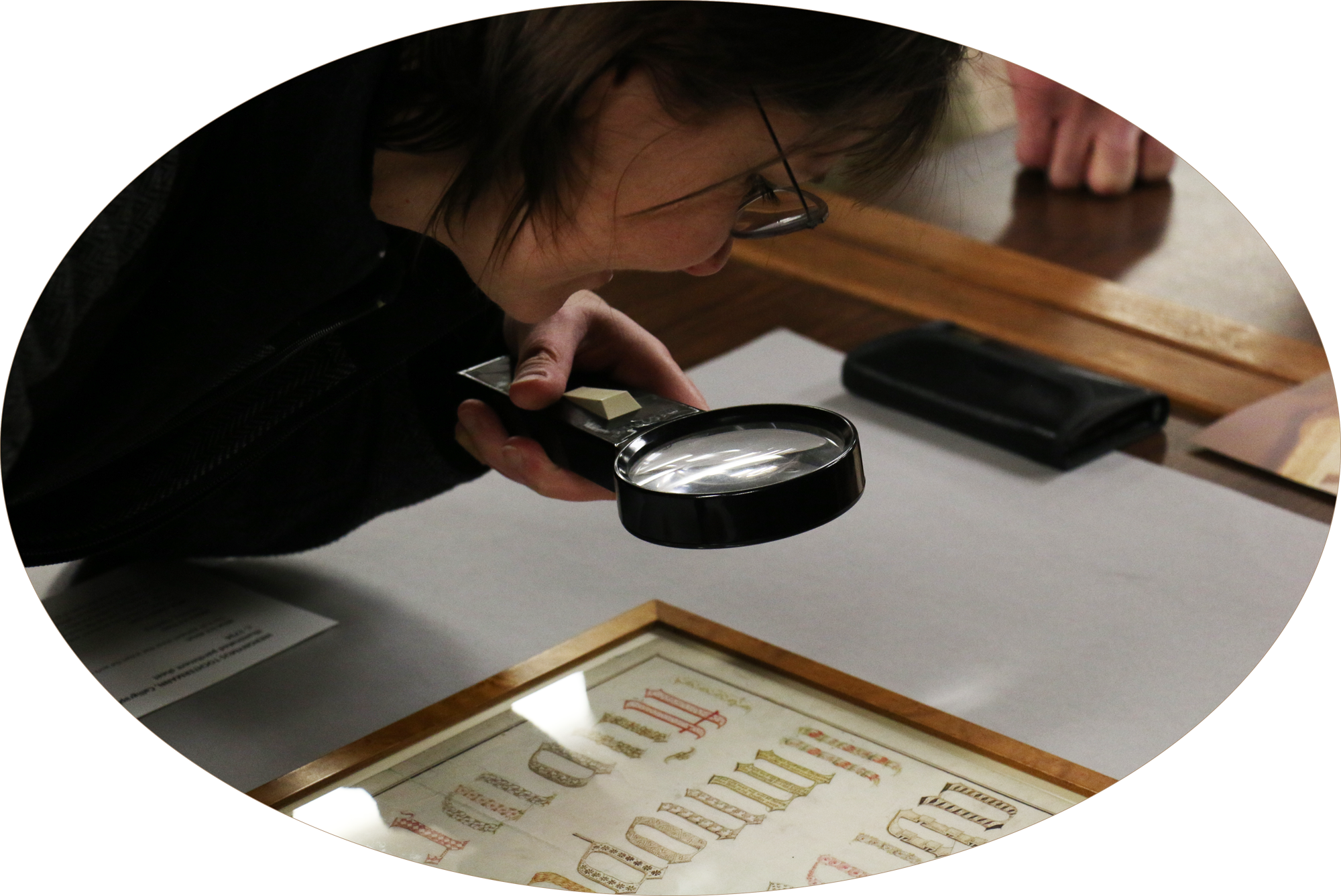
© University of Iowa Libraries Special Collections
Logistically speaking, each open house exhibited ten to twelve manuscripts aligned with a pre-decided theme. The themes included: Signs of Production, Decoration and Illumination, Script and Scribe, Manuscripts Outside Latin West, Medieval Society, Vernacular Texts, Music, Medieval Authors, and Bestsellers. This diverse set of themes allowed us to highlight certain texts each week without exhausting the materials or the visitors. The open houses were marketed through classroom instructions, social media, departmental networking, events, newsletters, and blogs. These efforts garnered an audience of students, scholars, and outside community members of various ages and backgrounds.
At the open houses, guests were given brief guidelines to handling the manuscripts and were encouraged to turn the leaves by the margins. Like the curious visitor above, many could not believe that they could touch, let alone, move through the leaves of a codex to see all the pages of script and all the images. However, in cases when a particularly large number of visitors were present, guests were advised to admire the manuscripts without touching as to protect the longevity and structure of the manuscript. During these events, special precautions were taken to make sure the manuscripts were handled carefully, while also allowing the viewer to engage and ask questions. Non-flash photographs were highly encouraged, and many patrons took away some amazing captures to keep and share with friends and family. We also offered an interactive matching game of medieval authors, tattoos, buttons, and bookmarks for visitors to take home.
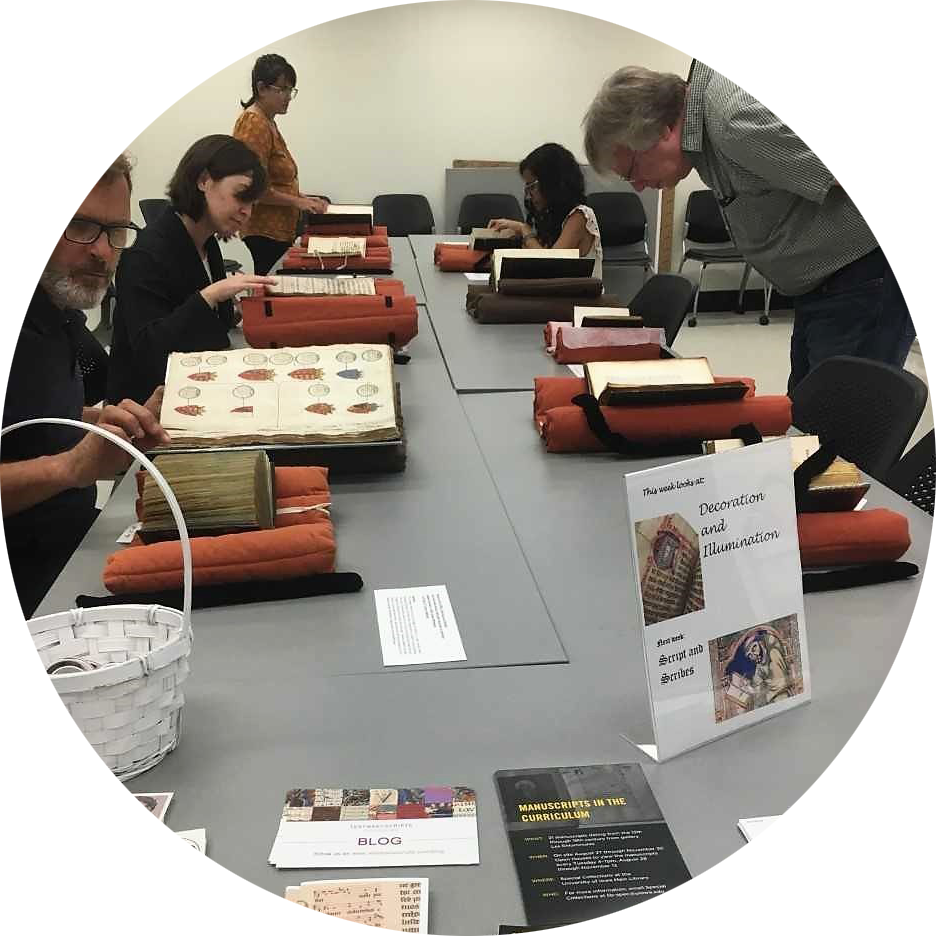
© University of Iowa Libraries Special Collections
Because of an increase in public visitors, the fall semester was a whirlwind of planning, marketing, curation, learning, and teaching. For example, Elizabeth Riordan (Outreach and Engagement Librarian) and I created specially made description cards for each manuscript on display—that’s a lot of writing and research! The description cards served two purposes. First, it was the perfect way for us to learn more about the visiting manuscripts, along with the interesting details and histories. This knowledge proved highly valuable during open houses and classes. Secondly, visitors were able to easily understand the terminology, history, production, and uses of the items exhibited. These descriptions also helped to spur questions and discussions throughout the weeks. Riordan and I also enjoyed choosing manuscripts from our own collections to feature alongside the visiting manuscripts. This experience allowed us to contextualize our own manuscripts and helped us to uncover themes that can be highlighted throughout them. Just as our visitors learned from the experience, we both also walked away from the open houses more knowledgeable about medieval manuscripts, their features, and histories.
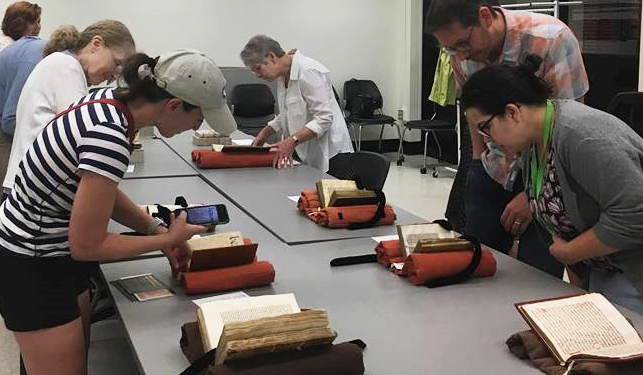
© University of Iowa Libraries Special Collections
There were several other benefits and take-aways from these open houses. Perhaps most importantly, we learned a great deal about the value of increasing access and visibility of the manuscripts through hands-on exploration. Patrons made incredible observations about the texts, while also initiating fruitful discussions amongst themselves and with staff. They also inquired about the contexts, materiality, users, producers, and authors. Visitors were able to actually feel the hair of the parchment, translate scripts, study the bindings, and so much more! With calm medieval chants playing in the background, many also took the events as an opportunity to relax and purely admire the artistry behind the texts. I would say friendships and interactions were created amongst these beautiful works, an effect that perhaps wouldn’t have happened without the hands-on experience with the manuscripts.
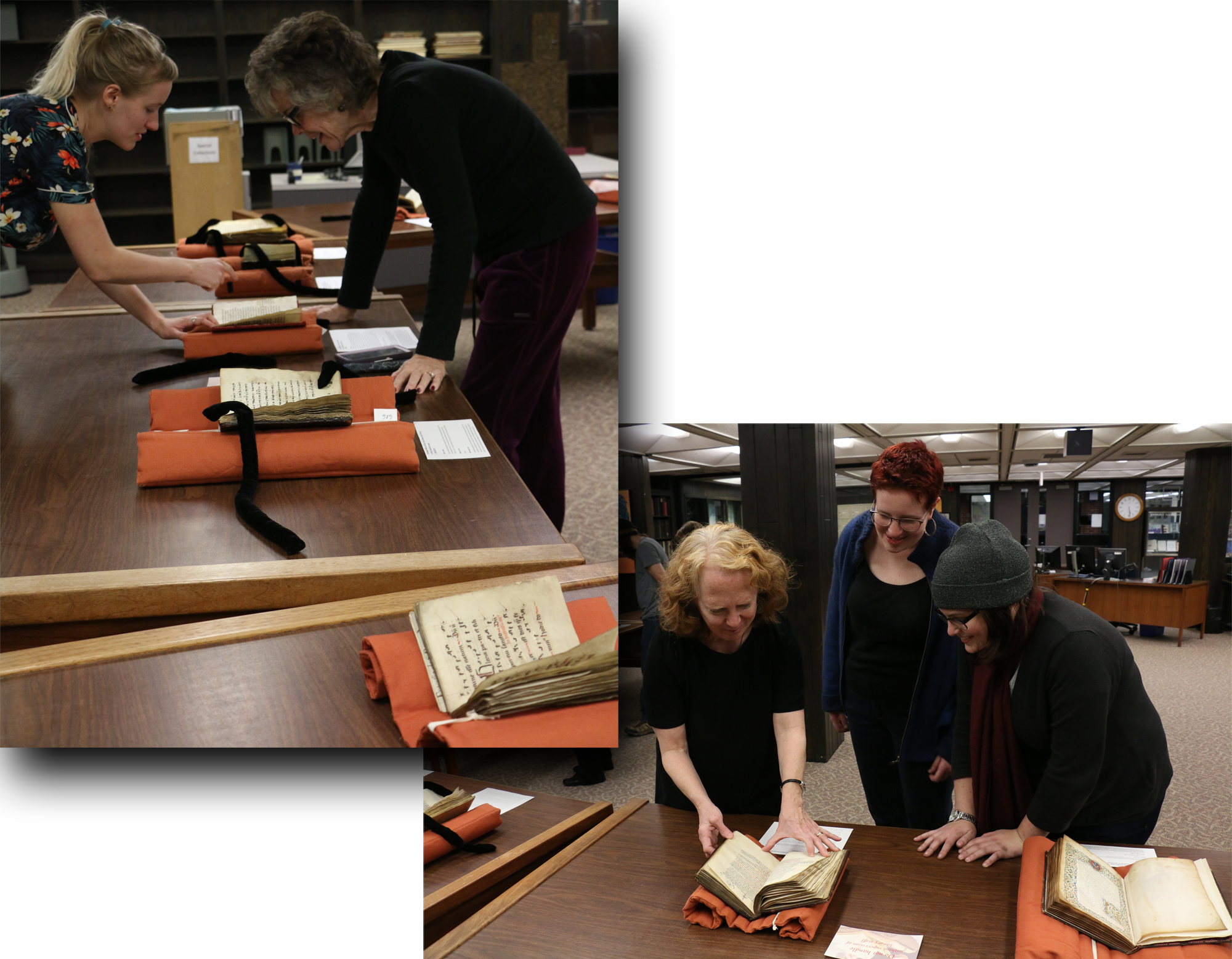
© University of Iowa Libraries Special Collections
The open house series ended with one last exhibit, as well as a visit and talk titled “People and the Book: The Voices of Manuscripts from the Middle Ages” from Laura Light of Les Enluminures. These final events allowed visitors to ask intriguing questions about the visiting manuscripts from Light, an expert historian on medieval works. As November comes to a close, it is now time to say goodbye to these works. I, for one, am going to miss the manuscripts very much. Here are a couple of photographs from my favorite visiting manuscript, a “Roll of Arms” created during the Elizabethan period in England. The manuscript features stunningly detailed shields, illustrated crowns, and stylized arms shaking hands to signify marriage. Like myself, I am sure many visitors appreciated the work and talent that went into these lovely pieces.
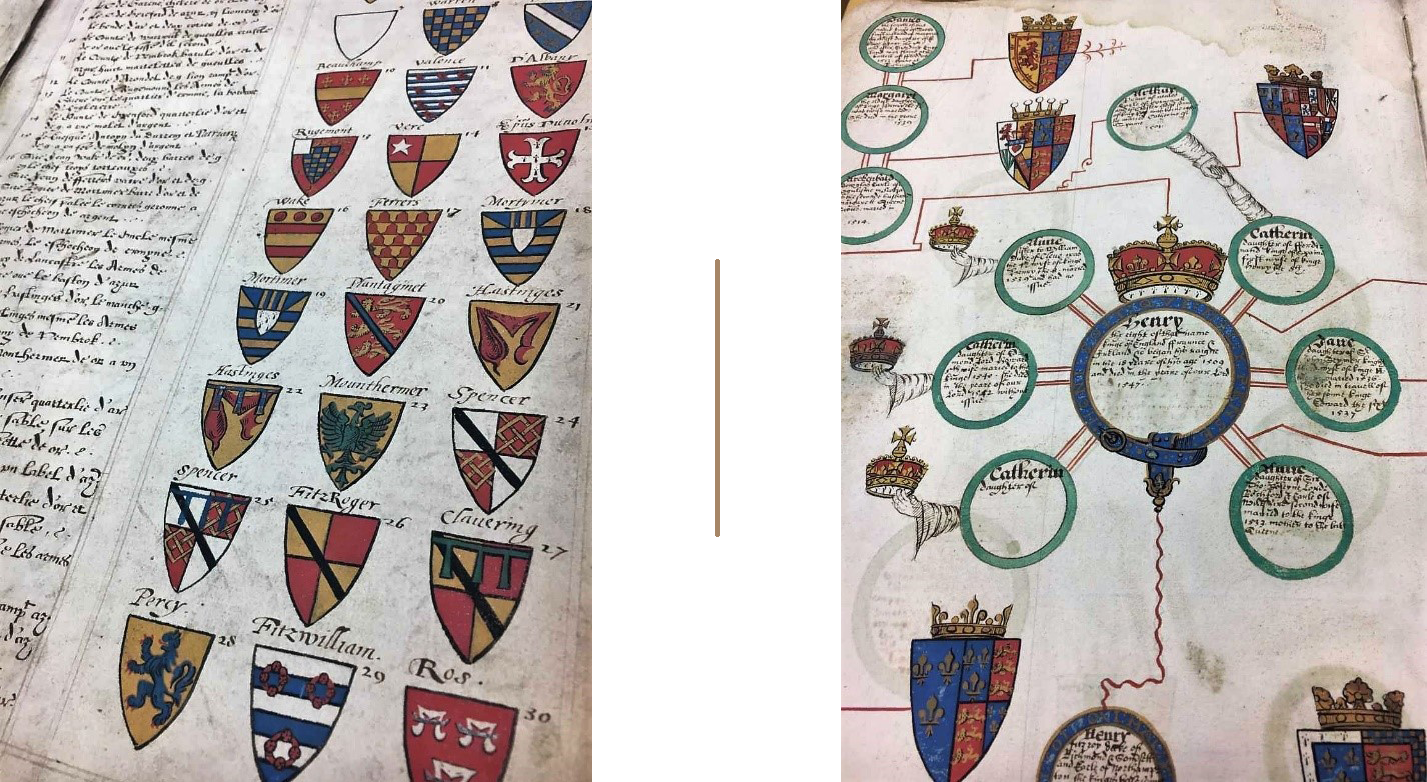
TM 627, Rolls of Arms, In English and Anglo-Norman, England, c. 1590-1600
The successful planning and implementation of the open houses was a team effort of the library staff, and we were incredibly grateful for the opportunity to engage with the community, students, and faculty during these open houses. Thank you to all that visited Special Collections, asked questions, and made us ponder the creation and use of these manuscripts. We hope you continue to visit us in the future, whether it is for research, exploration, or just admiring a cool book or leaf.
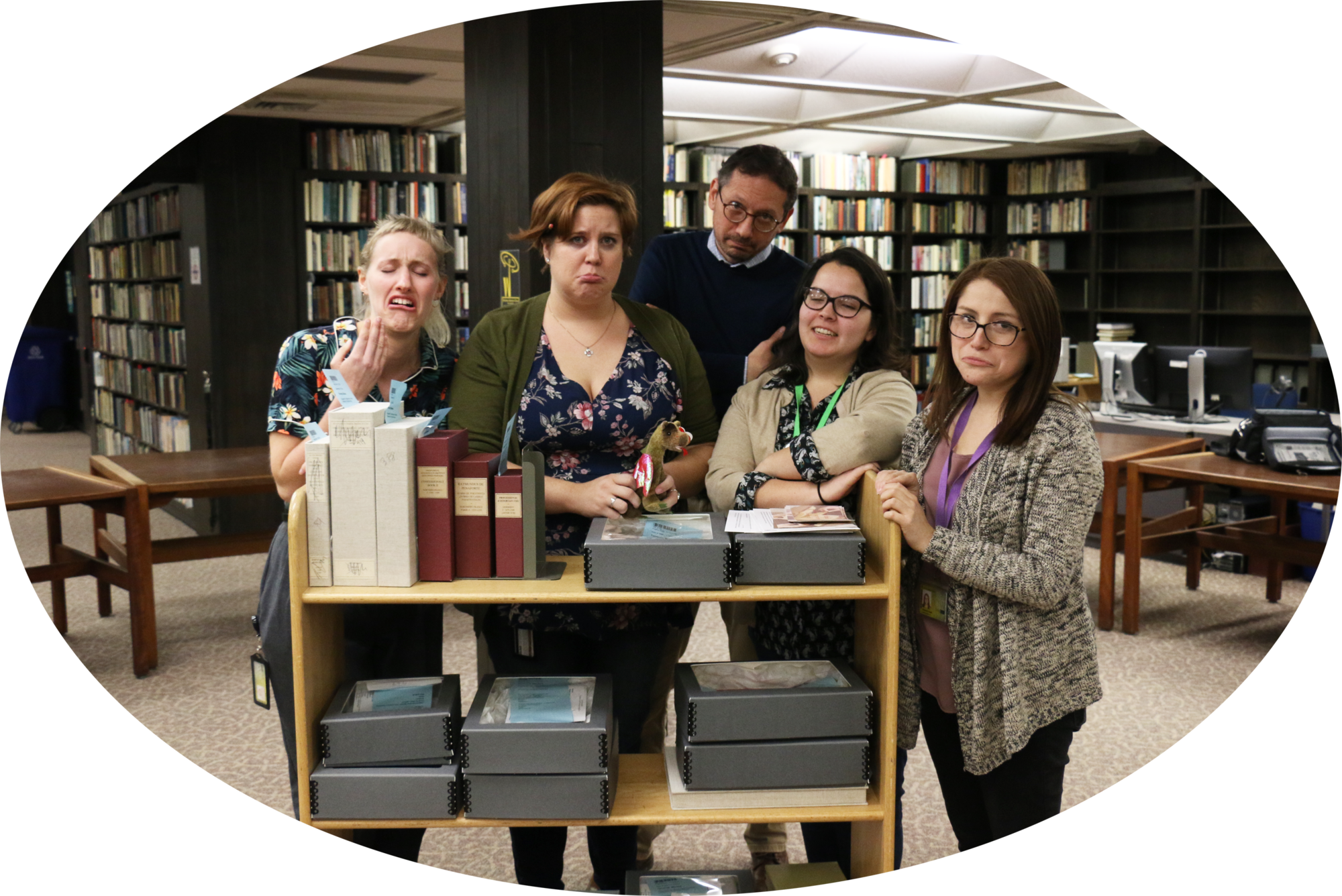
Saying farewell to the manuscripts (© University of Iowa Libraries Special Collections)
You can now receive periodic blog post updates by submitting your email up above in “Follow Us.”


